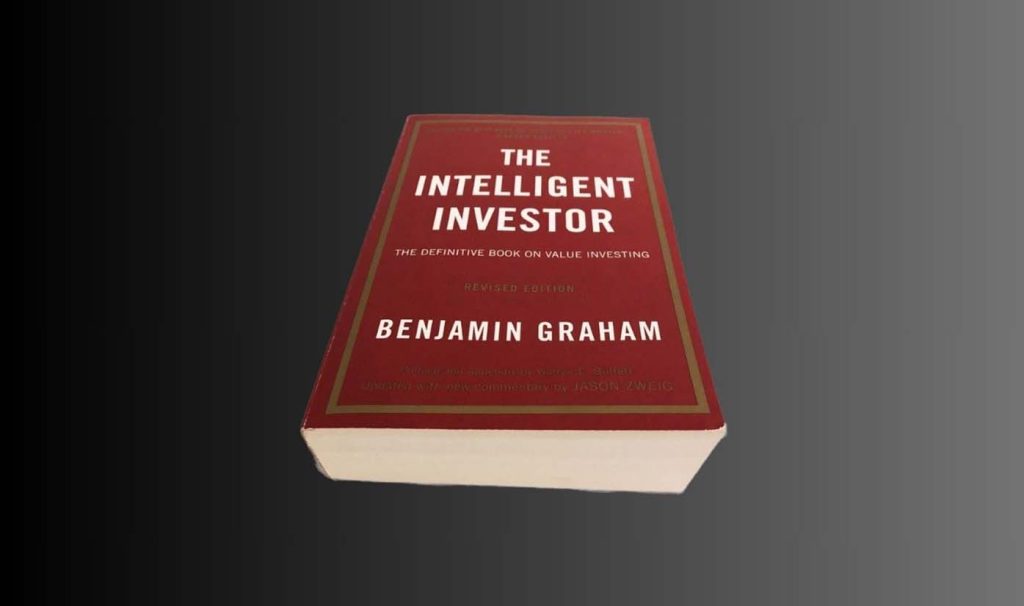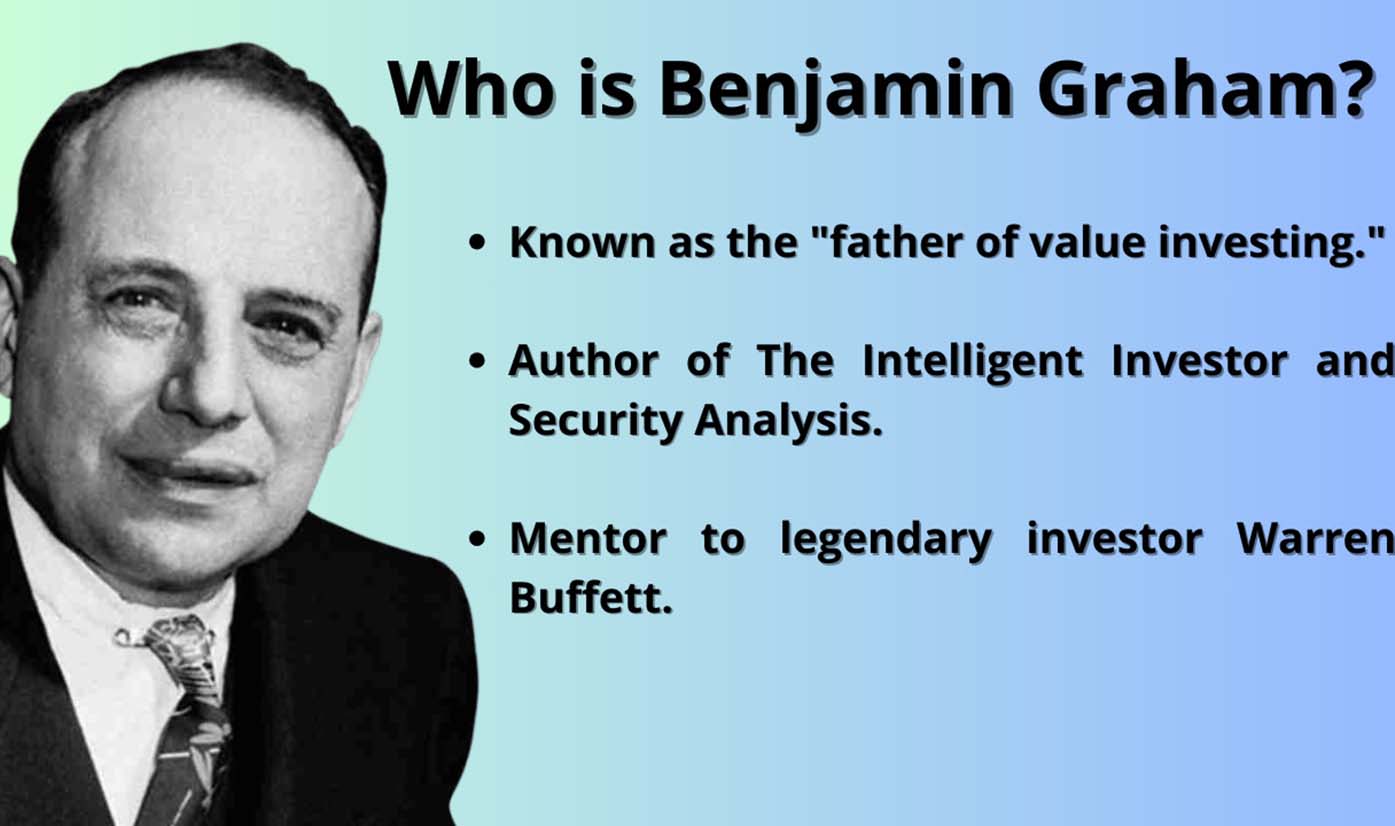When you think about value investing, one name likely comes to mind: Benjamin Graham. The father of value investing, Graham’s philosophy and principles have shaped the way investors approach the stock market. His teachings have influenced some of the most successful investors of all time, including Warren Buffett, who credits Graham as the most influential figure in his career.
We’ll delve deep into Benjamin Graham’s value investing philosophy, explain how it works, and identify the types of investors who will benefit most from it. We’ll also look at the practical ways you can apply his principles today, from stock selection to creating a diversified portfolio. Let’s dive into the world of value investing and explore how Graham’s ideas can help you achieve financial success.
What is Value Investing?
Before diving into Graham’s philosophy, let’s first define what value investing is. At its core, value investing is a strategy that involves buying securities (stocks, bonds, etc.) that appear to be undervalued by the market. Value investors look for stocks that are selling at a price lower than their intrinsic value—what they believe the stock is truly worth. This is often determined through a variety of fundamental analysis techniques, including examining financial ratios, company performance, and broader market trends.
Benjamin Graham’s approach to value investing centers around finding these undervalued opportunities and holding them until their true value is recognized by the market. This process requires patience, discipline, and a long-term perspective, as the market can take time to reflect the true worth of an investment.
Key Principles of Benjamin Graham’s Value Investing
Graham’s value investing philosophy can be boiled down to several key principles that continue to resonate with investors today:
1. Intrinsic Value vs. Market Price
Graham emphasized the importance of distinguishing between a stock’s intrinsic value and its market price. The intrinsic value is the true worth of a company based on its fundamentals—its earnings, assets, growth potential, and more. On the other hand, the market price is what investors are willing to pay for the stock in the open market, which may not always reflect the company’s true value.
Graham’s famous concept of margin of safety is the idea that investors should buy stocks at a price significantly lower than their intrinsic value. This gives a cushion in case the market misjudges the value of a stock, protecting the investor from significant losses.
Example: If a stock’s intrinsic value is $100 but is trading at $70, there is a $30 margin of safety, making it a potentially good investment opportunity. However, if the stock is trading at $95, the margin of safety is much smaller, and the investment risk is higher.
2. Focus on the Long-Term
Graham’s investment strategy revolves around buying undervalued stocks and holding them for the long term. He believed that the stock market is inherently irrational in the short term, but over the long run, the market tends to correct itself, and the price of undervalued stocks will eventually rise to reflect their true value.
This long-term mindset helps investors avoid reacting to short-term market fluctuations and instead focus on the fundamentals of the company.
3. Risk Management
One of Graham’s key teachings is the importance of managing risk. He argued that investors should not focus solely on maximizing returns but should instead focus on minimizing risk. This can be achieved by buying stocks at a significant discount to their intrinsic value (margin of safety), diversifying investments, and avoiding speculation.
For Graham, the goal was not to make huge gains from speculative bets but to achieve steady, reliable returns over time. His advice is particularly important for those looking to invest without exposing themselves to undue risk.
4. The Market is Often Overly Emotional
Graham believed that the stock market is frequently driven by emotions, such as fear and greed. As a result, stocks may become overvalued or undervalued due to market sentiment rather than their actual fundamentals. Value investors take advantage of this by looking for opportunities when stocks are trading below their intrinsic value due to irrational fear or uncertainty in the market.
Example: During market downturns, stocks may become cheap due to widespread fear. This could create opportunities for value investors to buy quality companies at discounted prices.
5. Investing in Quality Companies with Strong Fundamentals
While Graham was known for seeking out undervalued stocks, he also believed in the importance of investing in companies with solid fundamentals. He would analyze a company’s balance sheet, profitability, earnings stability, and financial health to ensure that it had the ability to weather downturns and continue generating value over time.
Graham’s strategy emphasized conservative investing, where the investor’s focus is on solid, financially healthy companies rather than chasing speculative investments or high-growth stocks.
Who Should Use Benjamin Graham’s Value Investing Strategy?

Graham’s value investing philosophy is best suited for individuals who are patient, disciplined, and have a long-term mindset. It is not a get-rich-quick strategy, and investors need to be prepared for the possibility that it may take years for their investments to yield returns. Here’s a breakdown of who might benefit most from Graham’s approach:
1. Long-Term Investors
If you have a long-term investment horizon (10 years or more), Graham’s value investing strategy is ideal. It requires the ability to ignore short-term market noise and focus on the long-term potential of your investments.
2. Risk-Averse Investors
If you are risk-averse or want to avoid speculative investments, Graham’s emphasis on margin of safety and risk management is perfect. By investing in undervalued companies with strong fundamentals, you reduce the likelihood of significant losses.
3. People Who Prefer Hands-Off Investing
Value investing can be a relatively hands-off strategy, especially if you’re choosing to invest in mutual funds or ETFs that track value stocks. If you don’t have the time or expertise to actively manage your investments, you can rely on professional fund managers who follow Graham’s principles.
4. Investors Who Want Steady, Consistent Returns
While value investing doesn’t promise overnight gains, it can provide steady, long-term growth. If you’re looking for consistency over speculation, this strategy is ideal.
How to Apply Benjamin Graham’s Principles to Your Investment Strategy
Step 1: Identify Undervalued Stocks
The first step in applying Graham’s value investing philosophy is to identify stocks that are undervalued relative to their intrinsic value. This involves a combination of fundamental analysis and understanding the market.
Step 2: Look for a Margin of Safety
As Graham famously said, “The first rule of investing is don’t lose money.” To protect yourself from significant losses, always buy stocks with a margin of safety—a price that is below the company’s intrinsic value.
Step 3: Focus on Quality, Not Speculation
Graham warned against chasing after speculative investments or high-growth stocks. Instead, focus on investing in quality companies with strong balance sheets, steady earnings, and good management.
Step 4: Diversify Your Portfolio
While Graham focused on individual stocks, he also emphasized the importance of diversification to spread out risk. By investing in a variety of undervalued companies across different sectors, you reduce the impact of a poor-performing stock on your overall portfolio.
Step 5: Be Patient
Patience is key when following Graham’s philosophy. The stock market is volatile in the short term, but over time, value stocks will likely appreciate. Stay disciplined and avoid making emotional decisions based on short-term fluctuations.

Recommended Products for Value Investors
- Vanguard Value ETF (VTV) – A low-cost ETF that tracks the performance of large-cap value stocks, perfect for investors looking to diversify in line with Graham’s principles.
- Schwab U.S. Dividend Equity ETF (SCHD) – This ETF focuses on dividend-paying stocks, providing consistent income while adhering to Graham’s principle of investing in financially stable companies.
- Fidelity Value Fund (FDVLX) – A mutual fund that focuses on undervalued U.S. stocks with solid fundamentals.
Benjamin Graham’s value investing philosophy has stood the test of time, shaping the approach of successful investors like Warren Buffett and countless others. By focusing on intrinsic value, margin of safety, and long-term growth, Graham’s principles provide a solid foundation for any investor looking to build wealth through a conservative, thoughtful approach.
If you’re someone who values financial security and steady returns over speculative bets, value investing could be the perfect strategy for you. With a little patience, research, and discipline, you can apply Graham’s timeless principles to achieve your long-term financial goals.
